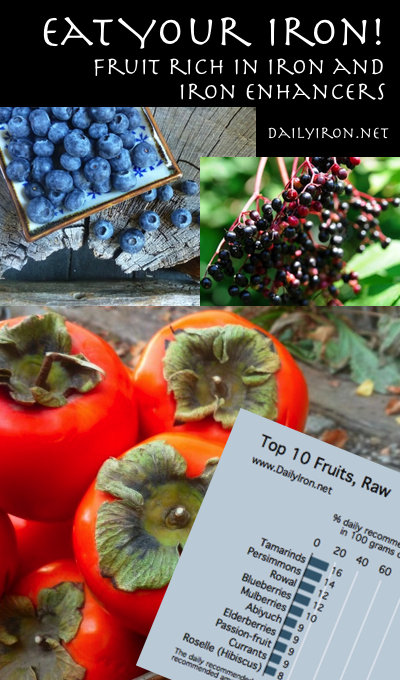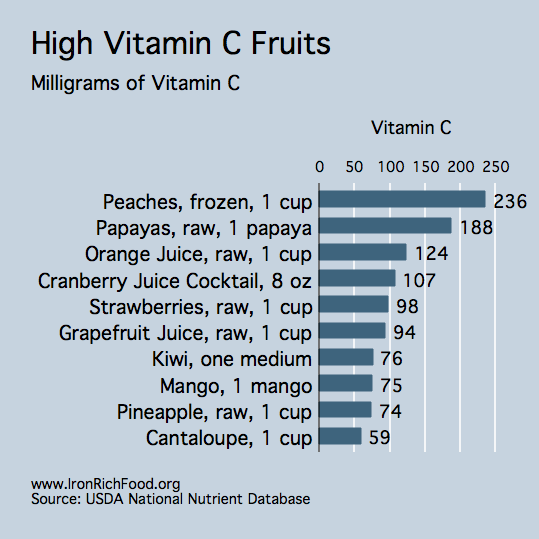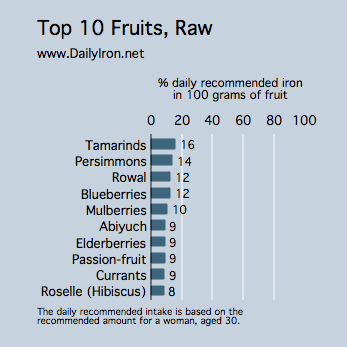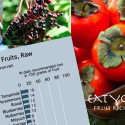 Fruit in general is not the best dietary source of iron, notwithstanding some key exceptions in our Top Ten list.
Fruit in general is not the best dietary source of iron, notwithstanding some key exceptions in our Top Ten list.
Top Iron Rich Fruits
Our Top Ten list is a good place to start your investigation of high iron fruits but keep in mind that the daily recommended intake on the graph is for 100 grams of that particular fruit and based on data from the USDA. One hundred grams of elderberries is a lot of elderberries (one cup of elderberries is 145 grams as a point of comparison). At the top of the list are canned olives, tamarinds, persimmons, rowal, blueberries, mulberries, abiyuch, elderberries, passion-fruit, and currants. These are quantities of 100 grams which is a lot of currants (good as currants may be). For the iron content of other common fruit, check out the links below or use the search function on the website to examine your favorite fruits.
The Contribution Of Fruit To Iron: Vitamin C
Though not loaded with iron itself, fruit makes an important contribution to iron absorption for people relying on plant-based sources of food for iron (such as those on a vegetarian diet): fruit tends to be high in vitamin C.
 Vitamin C is an iron absorption enhancer. If you eat fruit or other food high in vitamin C along with your oatmeal or your pinto beans, you will absorb more of the iron present in that grain or bean dish. Adding vitamin C to the vegetarian diet is an important strategy and fruit helps you do just that. We include here as well food, including fruit, high in vitamin C.
Vitamin C is an iron absorption enhancer. If you eat fruit or other food high in vitamin C along with your oatmeal or your pinto beans, you will absorb more of the iron present in that grain or bean dish. Adding vitamin C to the vegetarian diet is an important strategy and fruit helps you do just that. We include here as well food, including fruit, high in vitamin C.
Iron In Common Fruits
To explore the content of iron in some of the more popular fruits, check out the iron graphs in the links below.
 Read more about iron rich foods.
Read more about iron rich foods.
